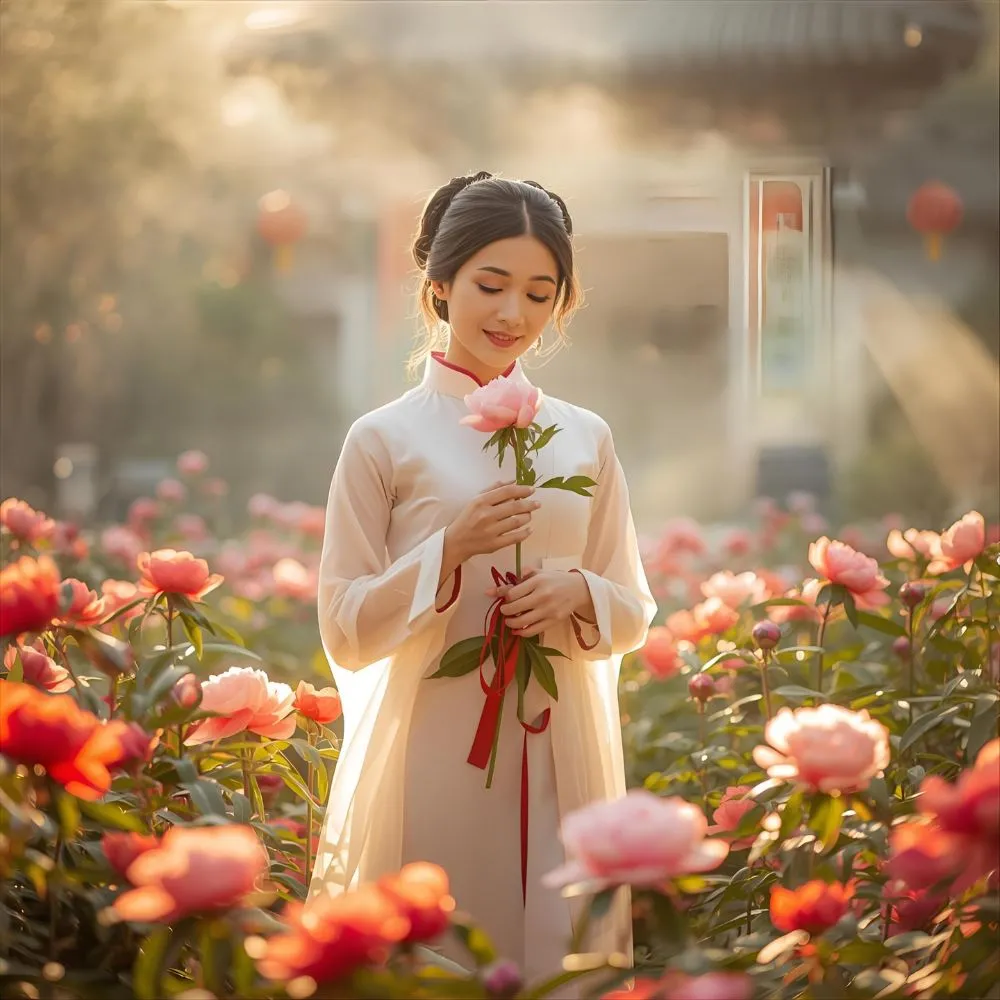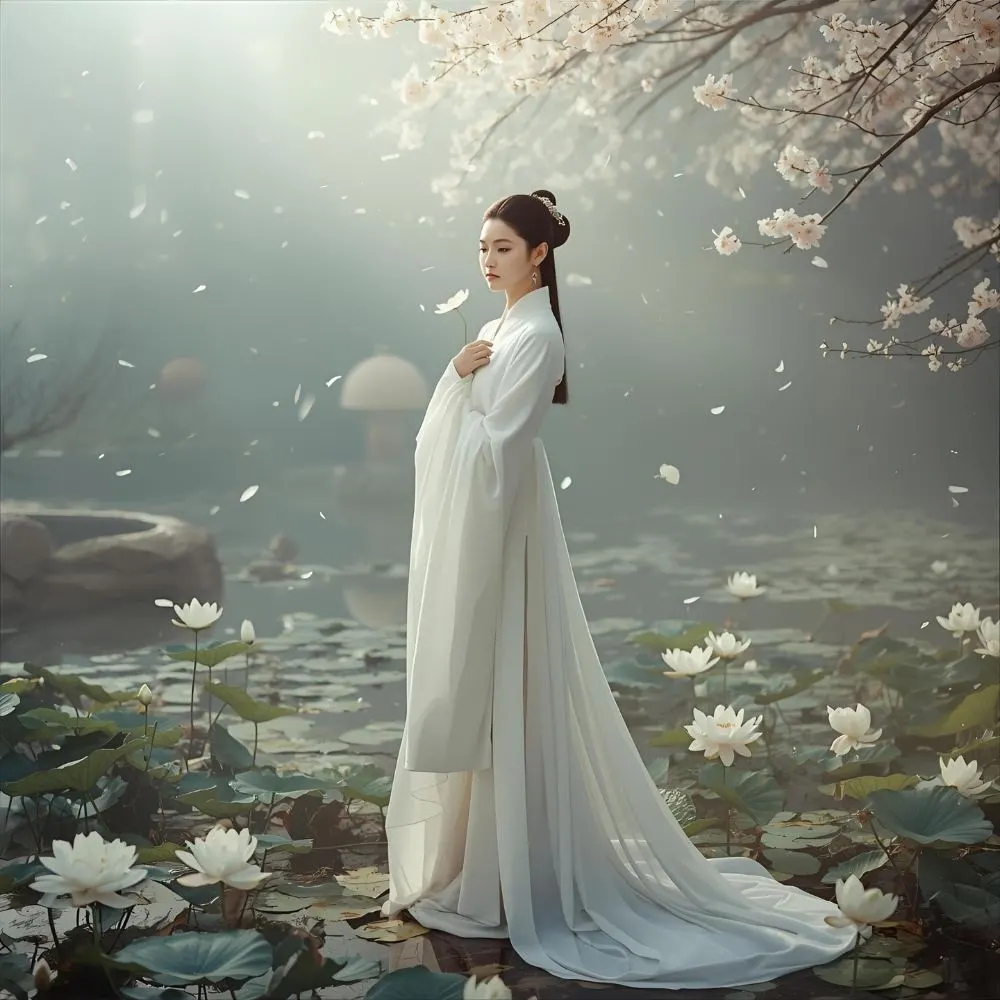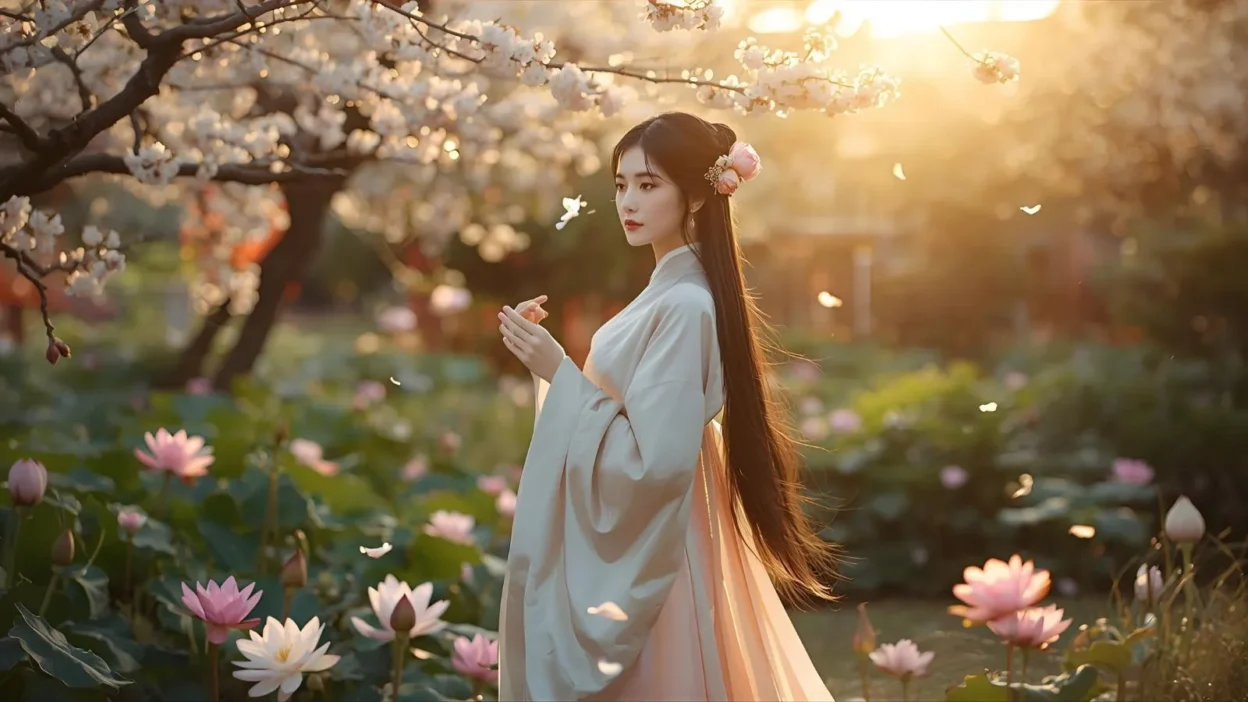Hey there! If you’re someone who loves finding the hidden stories, feelings, and spiritual messages behind every flower — then you’re in the right place. 🌸
You know, sometimes we look at a simple flower, but behind its color, fragrance, and name lies an entire world of meaning.
Today, we’re diving into the world of Chinese Flower Symbolism — where every bloom carries a message of love, peace, new beginnings, or the journey toward inner light.
So come with me on this little journey, and let’s explore how Chinese flowers speak to the heart and soul through their colors and meanings. 🌼
Chinese Lotus Flowers

In Chinese culture, the lotus flower is one of the most powerful spiritual symbols. It rises from muddy waters and blooms in perfect beauty — a living lesson in purity, resilience, and spiritual rebirth.
The lotus teaches that beauty and strength can emerge from darkness. Even when surrounded by challenges or “mud,” your spirit can still rise above, untouched and radiant. That’s why in Buddhism, the lotus represents the soul’s journey toward enlightenment.
There’s also a saying in Chinese philosophy:
“A lotus remains unstained, even by the mud it grows in.”
Spiritually, this reminds us to stay true to our inner peace, even when the world feels messy or uncertain. Emotionally, the lotus whispers, “You are growing even in the hardest times.”
When you see a lotus in your dreams or real life, take it as a sign that healing, balance, and transformation are blooming within you.
Chinese Flower Meanings
Every flower in Chinese culture carries a message — a reflection of emotions, virtues, or stages of life. Here are a few of the most meaningful:
- Orchid (兰花 – Lánhuā): Symbol of elegance, friendship, and nobility. The orchid speaks of inner beauty and grace, even when unseen.
- Chrysanthemum (菊花 – Júhuā): Represents long life, strength, and peace during difficult times. It’s often linked with autumn and endurance.
- Plum Blossom (梅花 – Méihuā): Known for blooming in winter, it embodies hope, perseverance, and courage.
- Peach Blossom (桃花 – Táohuā): Associated with love, romance, and vitality — a sign of new beginnings.
- Peony (牡丹 – Mǔdān): The “King of Flowers,” symbolizing wealth, honor, and deep affection.
Together, these flowers create a language of the heart — a way to express emotions that words often can’t.
When we learn their meanings, we begin to see nature not as decoration, but as a living mirror of our own spiritual journey.
Chinese Peony Meaning

The peony, called Mǔdān in Chinese, is known as the “Flower of Riches and Honor.” In ancient China, emperors planted peonies in palace gardens as a symbol of prosperity, love, and feminine beauty.
Spiritually, the peony reminds us to embrace abundance — not just in wealth, but in love, kindness, and gratitude. Its full, layered petals represent the unfolding of the heart.
If a peony appears to you — whether in art, dreams, or nature — it may be calling you to open yourself to joy, connection, and generosity.
In relationships, the peony represents romantic devotion and harmony. It encourages you to nurture your emotions, much like the flower that opens one petal at a time until it reveals its full glory.
Lotus Flower in Chinese Culture
The lotus flower holds deep roots in both Buddhism and Taoism, making it one of the most spiritually meaningful symbols in Chinese culture.
In temples, you’ll often see statues of Buddha sitting on a lotus — a sign of divine awakening and purity of mind. The flower’s journey from mud to sunlight reflects our own spiritual path: we grow through experiences, even painful ones, until we find inner peace.
The lotus also represents detachment. Just as water rolls off its petals without sticking, it reminds us not to cling to negativity or fear. Emotionally, it’s a symbol of forgiveness and letting go.
In families, offering lotus flowers during festivals expresses wishes for peace, purity, and spiritual balance. It’s not just a flower — it’s a prayer in bloom.
White Flowers in Chinese Culture

White flowers carry a mix of meanings in Chinese tradition. They are often associated with purity, honesty, and spiritual peace — but they are also used in times of mourning.
During funerals, white chrysanthemums are offered to honor the deceased, representing a pure journey to the afterlife. While this may sound sorrowful, it’s actually deeply spiritual — it’s about release, not loss.
Yet, white flowers can also symbolize new beginnings and cleansing energy. They remind us to clear emotional clutter and start fresh.
If white flowers appear in your life, it may mean that you’re entering a time of emotional renewal or spiritual awakening. They whisper: “Let go. Heal. Begin again.”
Real-Life Scenarios: When Flowers Speak to the Soul
1. The Garden of Healing
After a painful breakup, Mei visited a small Chinese garden. She sat near a pond, quietly watching a single lotus rise from the mud. That image stayed in her heart — it reminded her that she, too, could rise again, clean and whole.
2. A Gift of Peonies
Liang once gifted his grandmother a bouquet of pink peonies on her birthday. She smiled and said, “These flowers mean you wish me a happy and honored life.” He hadn’t known it, but his choice carried generations of meaning.
3. The White Chrysanthemum
During a family memorial, a little girl placed a white chrysanthemum on her grandfather’s grave. Her mother whispered, “He will rest in peace now.” That simple flower helped her understand love, loss, and letting go.
FAQs
1. What is the most sacred flower in Chinese culture?
The lotus flower is considered the most sacred, symbolizing purity, enlightenment, and spiritual rebirth.
2. Why are peonies called the “King of Flowers”?
Because they symbolize honor, wealth, and love, and were often grown in royal gardens as a sign of power and beauty.
3. Are white flowers bad luck in China?
Not exactly — they are traditionally used for mourning, but spiritually they represent peace, purity, and transition.
4. What flower represents hope and strength?
The plum blossom, which blooms in winter, stands for resilience and courage in hard times.
5. How can I use Chinese flower symbolism in my life?
You can bring these meanings into your home, garden, or meditations. Choose flowers that match your emotional energy — lotus for healing, peony for love, chrysanthemum for peace.
Conclusion:
Every petal, every bloom, holds a whisper of truth. The deeper we look into Chinese flower symbolism, the more we understand about ourselves — our pain, our growth, and our capacity to love.
The lotus tells us to rise from our struggles. The peony reminds us to open our hearts. The white chrysanthemum teaches peace.
When you next see a flower, don’t just look — listen. It may be offering a message your soul has been waiting to hear.
Flowers are not just nature’s decorations — they are mirrors of the spirit, teaching us to grow, to forgive, and to bloom again.

Malcolm Gladwell is a celebrated American author, journalist, and storyteller known for his thought-provoking insights into human behavior and the hidden patterns that shape our lives. On Dreammaening.com, Malcolm brings his signature curiosity and analytical style to the fascinating world of dreams and symbolism.




